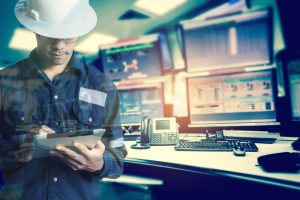Exploring the virtual plant
How AR and VR can benefit manufacturing facilities
When you think of Augmented Reality (AR) and Virtual Reality (VR) you might think of being immersed in a simulated world filled with mystical creatures like on PokemonGo.
However, AR and VR are not just for our personal entertainment — these technologies are being used to benefit manufacturing facilities.
John Young, APAC sales director of automation parts supplier, EU Automation, discusses the uses of AR and VR in manufacturing plants.
A recent study across eight Asia-Pacific regions revealed that 95 per cent of people surveyed had used AR or VR technology. While this exposure is predominantly as a result of entertainment and social use, the study demonstrates people’s experience to the technology is widening, opening up opportunities into other sectors.

One industry that could capitalise on the use of AR and VR is manufacturing, particularly for maintenance and training.
Predicting maintenance with AR
Augmented Reality displays virtual elements into an existing real-world environment, usually on a handheld device such as a tablet or mobile phone. Being able to view images, information or data overlaid onto the real-world scenario brings many possibilities for monitoring and maintenance in a manufacturing plant.
If there is an issue, error or failure with a piece of machinery, AR could be used to view live information and data to help diagnose the problem.
This early detection of faults means that issues can be fixed before a more serious breakdown occurs, helping to save costs by removing the need to replace entire pieces of the machinery.
Early detection of a problem with equipment also allows maintenance managers to address the problem quickly. Having access to automation industrial parts suppliers means that maintenance managers can save time both sourcing the part and reducing downtime due to delivery delays.
Virtual training
AR can also be used to teach staff new skills or techniques, such as using or assembling a new piece of equipment. Using AR for learning purposes can increase efficiency, confidence and knowledge with staff, as they can learn as they work with easy access to reference materials.
In addition to AR being implemented into manufacturing maintenance and training, VR also has an opportunity to make an impact.
VR immerses the user into a virtual world or scenario using a user-worn headset or goggles. It is hugely beneficial for training and educating staff – especially for risk assessment training. VR technology means that you can place staff into a virtual scenario, which allows them to experience a potentially hazardous or dangerous situation and practice how to appropriately deal with it.
Using VR in this way reduces the risk of injury and ultimately time and money on manual training. This increases effectiveness and staff safety, therefore improving processes and procedures in the plant.
While AR and VR are still commonly used for personal entertainment, these developing technologies can have a huge impact into the way plants facilitate maintenance and staff training.
Ultimately, AR and VR do not change what you do, but will change how you do things. So, if you thought AR and VR was just Pokémon Go and mystical creatures, think again.



